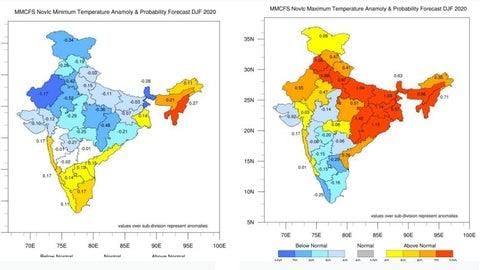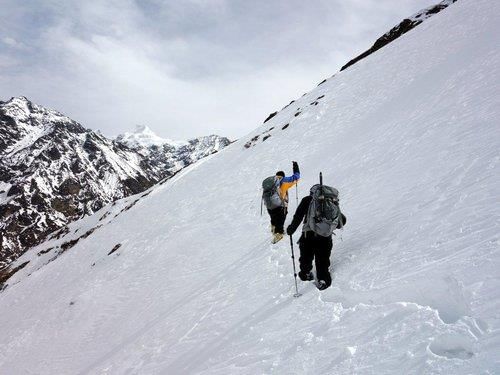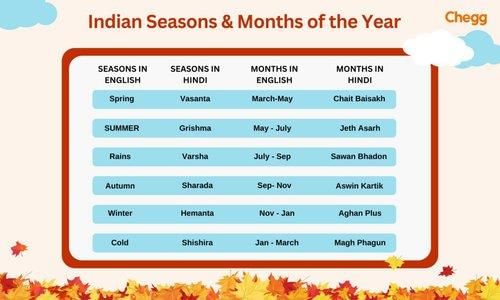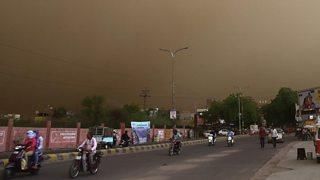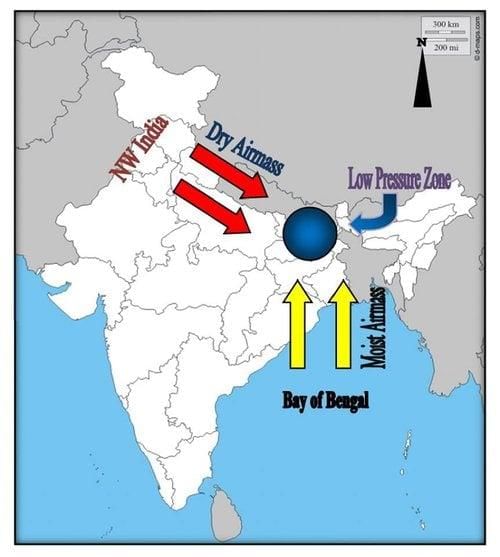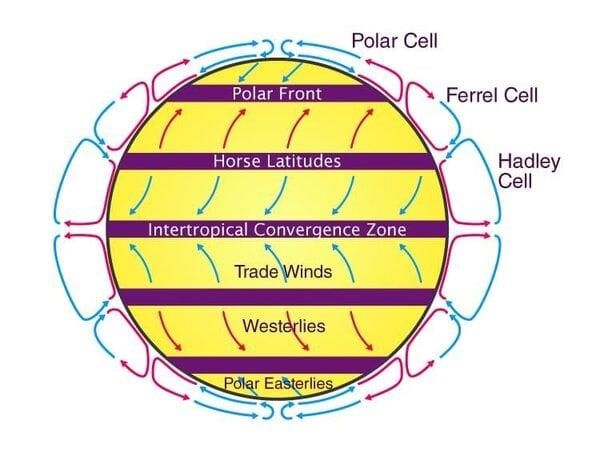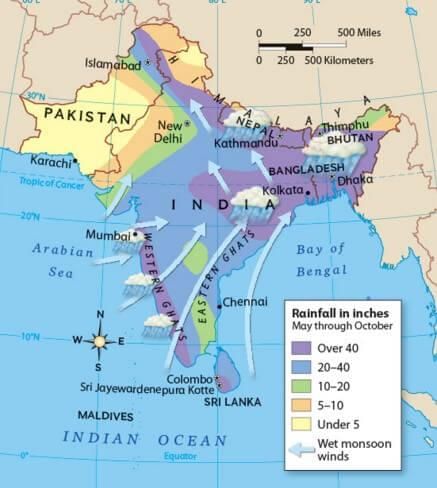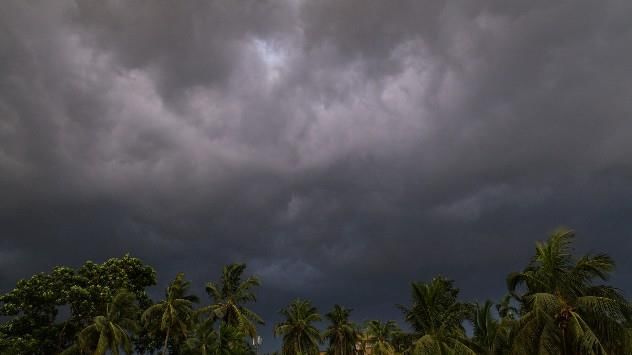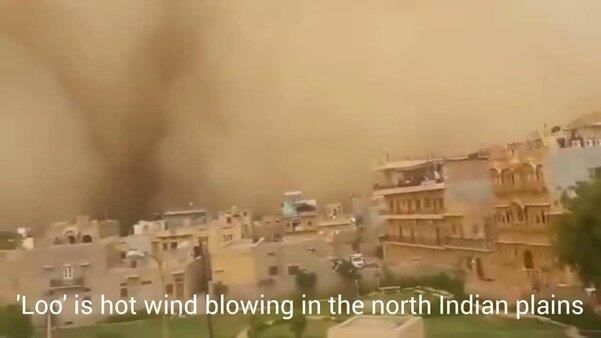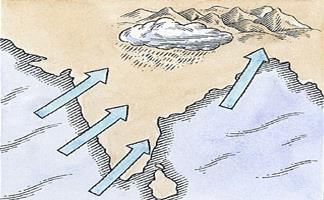|
Fill in the blank: The topography of the region influences the wind direction, becoming ___ in the Ganga-Brahmaputra delta. |
Card: 3 / 38 |
|
Winter monsoons in India primarily do not cause rainfall because they move from ___ to ___. |
Card: 5 / 38 |
|
True or False: Most parts of India receive significant rainfall during the winter months due to high humidity. |
Card: 7 / 38 |
|
False. Most parts of India do not receive significant rainfall during winter because winter monsoons have little humidity. 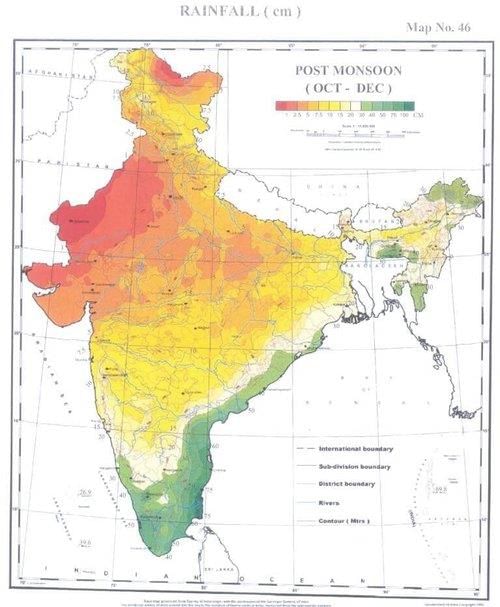 |
Card: 8 / 38 |
|
What role do weak temperate cyclones from the Mediterranean Sea play in the winter climate of northwestern India? |
Card: 9 / 38 |
|
They cause meager but beneficial rainfall in Punjab, Haryana, Delhi, and western Uttar Pradesh, which is important for Rabi crops. 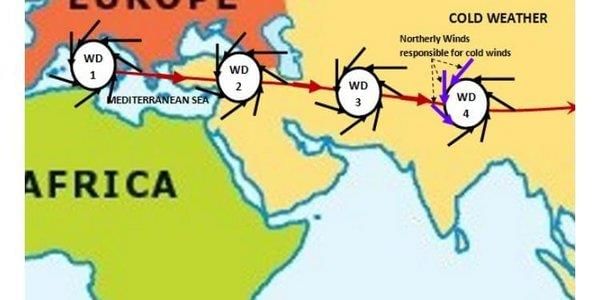 |
Card: 10 / 38 |
|
Fill in the blank: The flow of water in the Himalayan rivers during summer is sustained by the ___ that falls in the lower Himalayas during winter. |
Card: 11 / 38 |
|
In which months does the temperature in north India typically rise, indicating the hot weather season? |
Card: 13 / 38 |
|
True or False: The highest day temperature of about 48°C is commonly recorded in the Deccan Plateau during the summer months. |
Card: 15 / 38 |
|
False. Temperatures around 48°C are commonly recorded in the north-western part of India, not specifically in the Deccan Plateau. 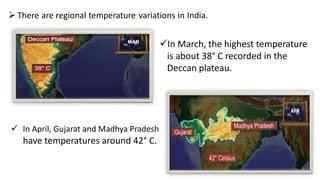 |
Card: 16 / 38 |
|
The ITCZ attracts surface circulation of winds, leading to the southwesterly winds on the west coast and easterly winds over north Bengal and Bihar, contributing to the monsoon dynamics.  |
Card: 18 / 38 |
|
Fill in the blank: Dust storms in the evening during May are common in ___, ___, Eastern Rajasthan, and ___, providing a respite from oppressive heat. |
Card: 19 / 38 |
 Unlock all Flashcards with EduRev Infinity Plan Starting from @ ₹99 only
|
|
What atmospheric conditions lead to local storms of great intensity during the hot weather season? |
Card: 21 / 38 |
|
A sudden contact between dry and moist air masses gives rise to local storms associated with violent winds, torrential rains, and even hailstorms. 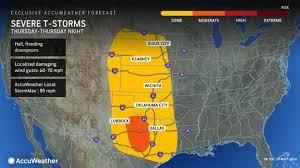 |
Card: 22 / 38 |
|
Mango showers in Kerala are primarily associated with the early ripening of ___ and are common during the ___ season. |
Card: 23 / 38 |
|
True or False: Norwesters are beneficial for rice cultivation in Bengal and Assam. |
Card: 25 / 38 |
|
The winds that bring about the southwest monsoon are known as ___ due to their direction. |
Card: 27 / 38 |
|
Fill in the blank: The first rain of the southwest monsoon often leads to a substantial drop in ___. |
Card: 29 / 38 |
|
What are the two main branches of the southwest monsoon that approach the Indian landmass? |
Card: 31 / 38 |
|
True or False: The term 'Kalbaisakhi' refers to the calm and gentle winds that occur during the monsoon. |
Card: 33 / 38 |
|
Fill in the blank: The hot, dry winds known as ___ blow across the Northern plains from Punjab to Bihar. |
Card: 35 / 38 |
|
The Western Ghats significantly affect the monsoon winds by causing heavy rainfall primarily on their ___ side. |
Card: 37 / 38 |





